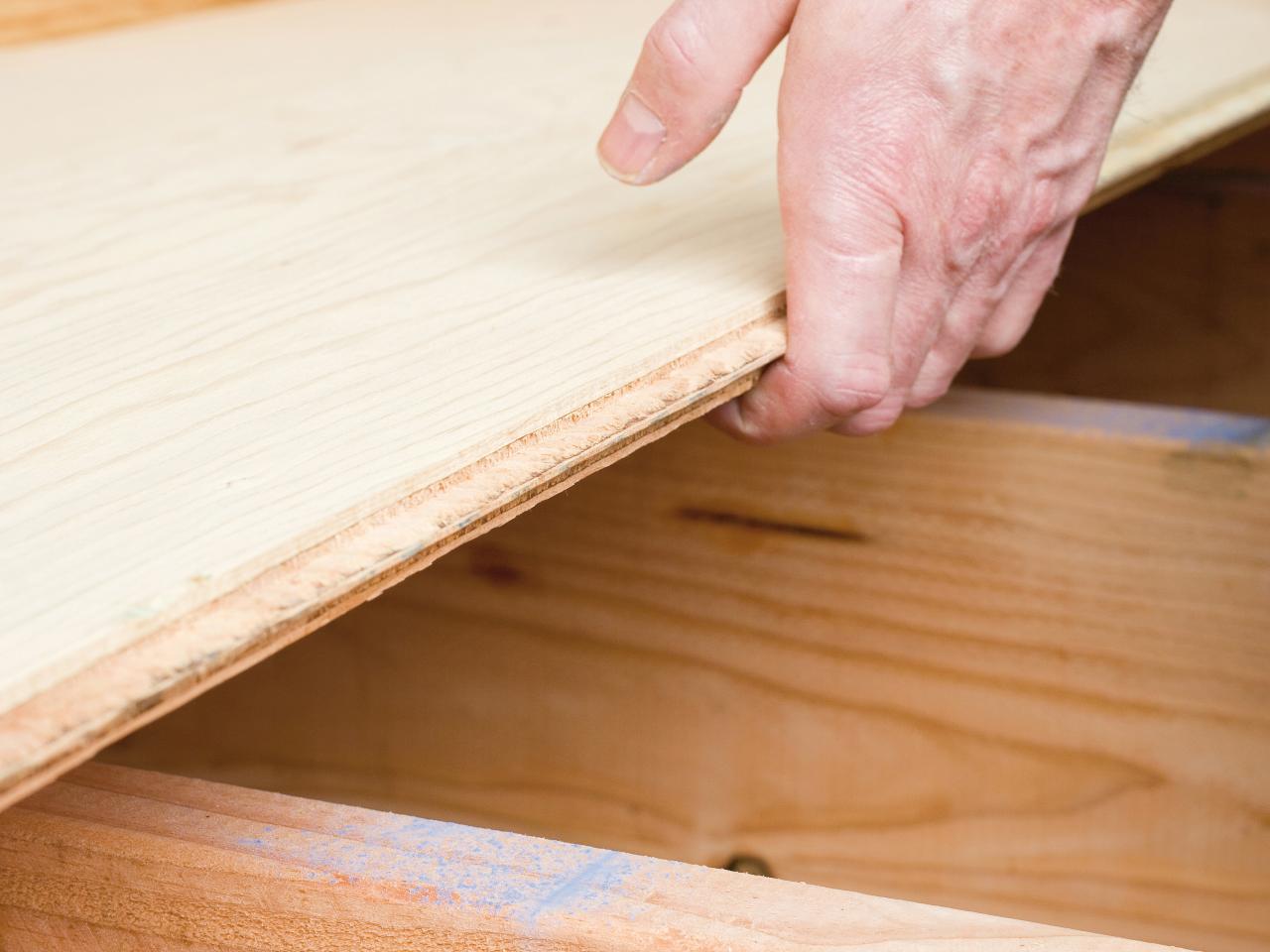
A sub-floor, as the name suggests is nothing else but a floor situated under the floor which you walk on. When you remove the carpet or a different type of flooring material, you can get to the sub-floor. Sub-floors are a crucial factor that needs to be taken into account when installing a new floor. You have to consider the material the sub-floor is made from and then think about the types of flooring that you install. When it comes to finished flooring material, people usually choose solid wood flooring, or engineered or laminate flooring. Now, let’s discuss different types of sub-floors – it can help you understand which finished flooring types you should install in each case.
Tongue & Groove and Plywood
Plywood is a composite material manufactured from thin layers (‘plies’) of wood veneer that are put together with adjacent layers with the use of an adhesive. You will encounter such sub-floors in houses. Solid wood floors can be installed through nailing or gluing to the plywood. As was the case with concrete sub-floors, engineered wood flooring of different types can be glued or floated to the wood that is placed below. In the case of laminate floors, gluing is not a proper installation method. Instead, such floors should be floated.
Tongue & groove sub-floors are composed of boards made of a softwood type. They look a lot like regular hardwood floors. Flooring installation methods used for a tongue & groove sub-floor are the same as those used for plywood sub-floors.
Concrete Sub-Floors
Concrete sub-floor is a flooring solution which is most frequently used in basements and at commercial buildings. Undoubtedly, no finished flooring can be nailed down to a sub-floor made of concrete. In such a case, a strong adhesive may be used to glue down battens (long flat strip of squared timber or metal used to hold something in place or as a fastening against a wall) to the concrete. That is a number one method, recommended when installing solid floors over concrete sub-floors. Then, you can fasten or glue the floor directly onto the batten. If you’ve decided to go for engineered wood floor, you can use a suitable method consisting of floating or gluing it directly over the concrete. The proponents of laminate floors can only resort to floating, as it is the only installation method advisable in this case.
Particle Boards
Other known as chipboard, this an engineered wood product made from wood particles and a synthetic resin, which is pressed and extruded. It is a relatively cheap alternative to tongue-and-groove or plywood sub-floors. Particle board has become increasingly popular in new houses because it’s durable, easy when it comes to installation and slightly firm. The one thing that you should take into account in the case of particle board is the fact that when installing solid wood flooring, you can’t nail it onto the particle board. The recommended fitting method is gluing it down. For laminate flooring, you should use floating (alike with all the above sub-floor types). An engineered wood floor can be installed by floating or gluing it directly onto the chipboard sub-floor.
Why are sub-floors not a good option?
Certain materials should preferably be avoided as sub-floors, due to numerous reasons. Here, we can name for instance vinyl floors or carpets which could have been glued down in the past. At first, you will need to remove them before the floor can be installed. Moreover, here is one crucial thing that applies to the fitting of all flooring types – before installation, remember to clean the sub-floor carefully, make it flat and ensure that it’s dry. If you overlook it, you may get a floor which is uneven or doesn’t stick. Moreover, the flooring can also warp and get damaged in the future.
If you have further questions regarding purchasing a new floor or you are looking for advice about the best wood flooring for your home, feel free to contact the ESB sales team. Contact us now to request your no hassle no obligation free samples or come down to our North London showroom for a closer look.
| Mon-Fri | 8:00AM – 5:00PM |
| Saturday | 10:00AM – 4:00PM |
| Sunday | 11:00AM – 3:00PM |





.svg)
.svg)